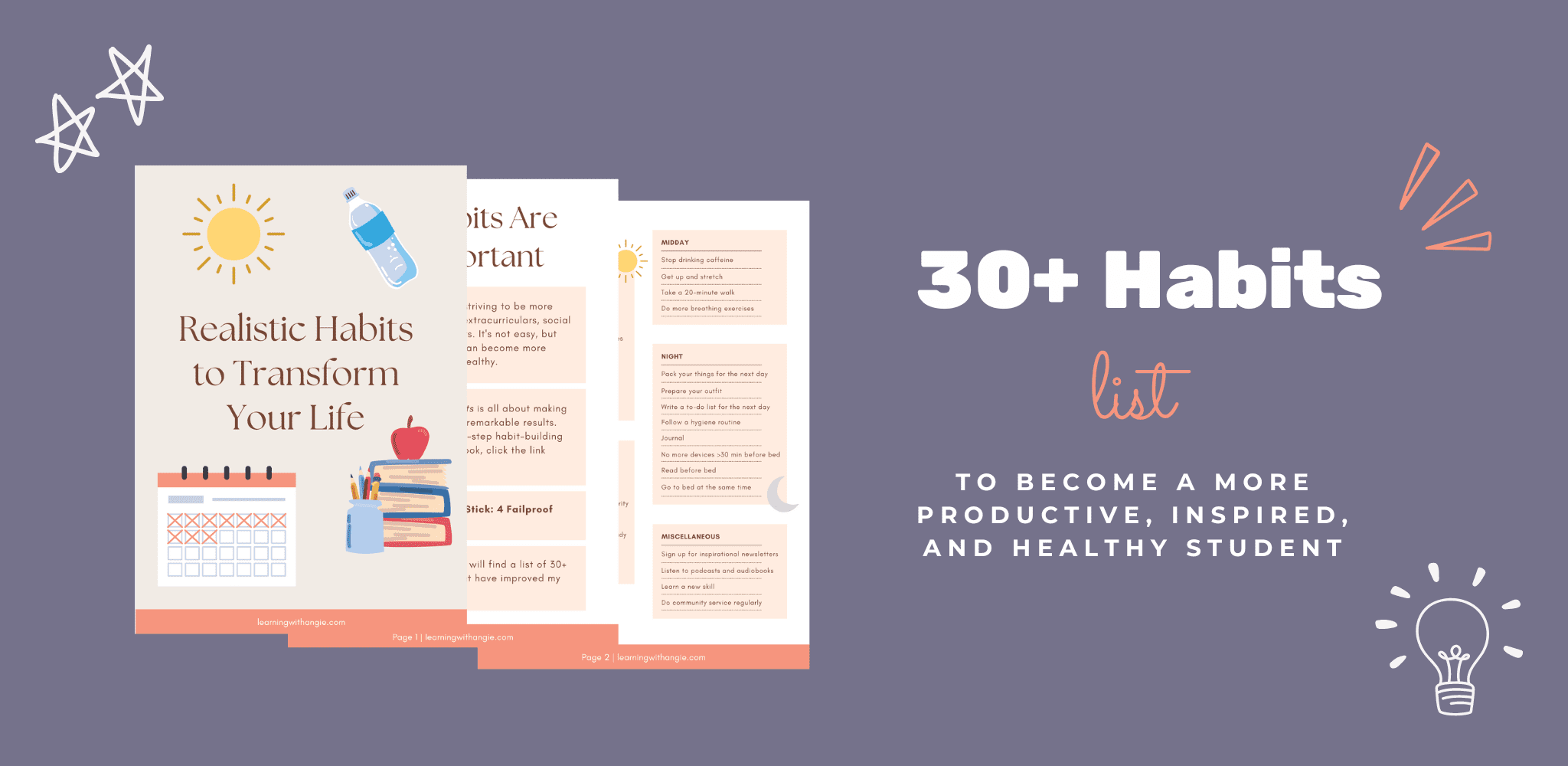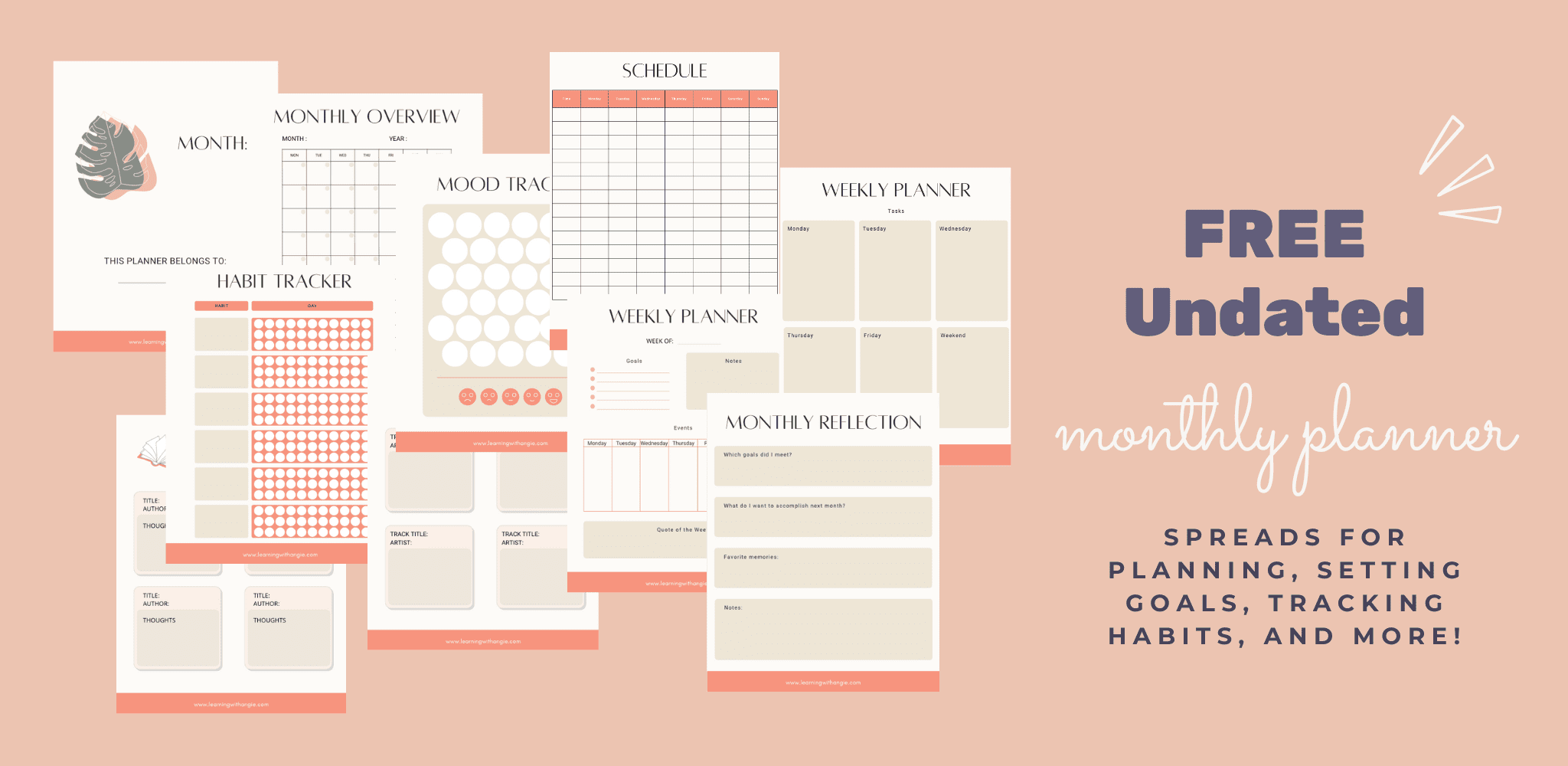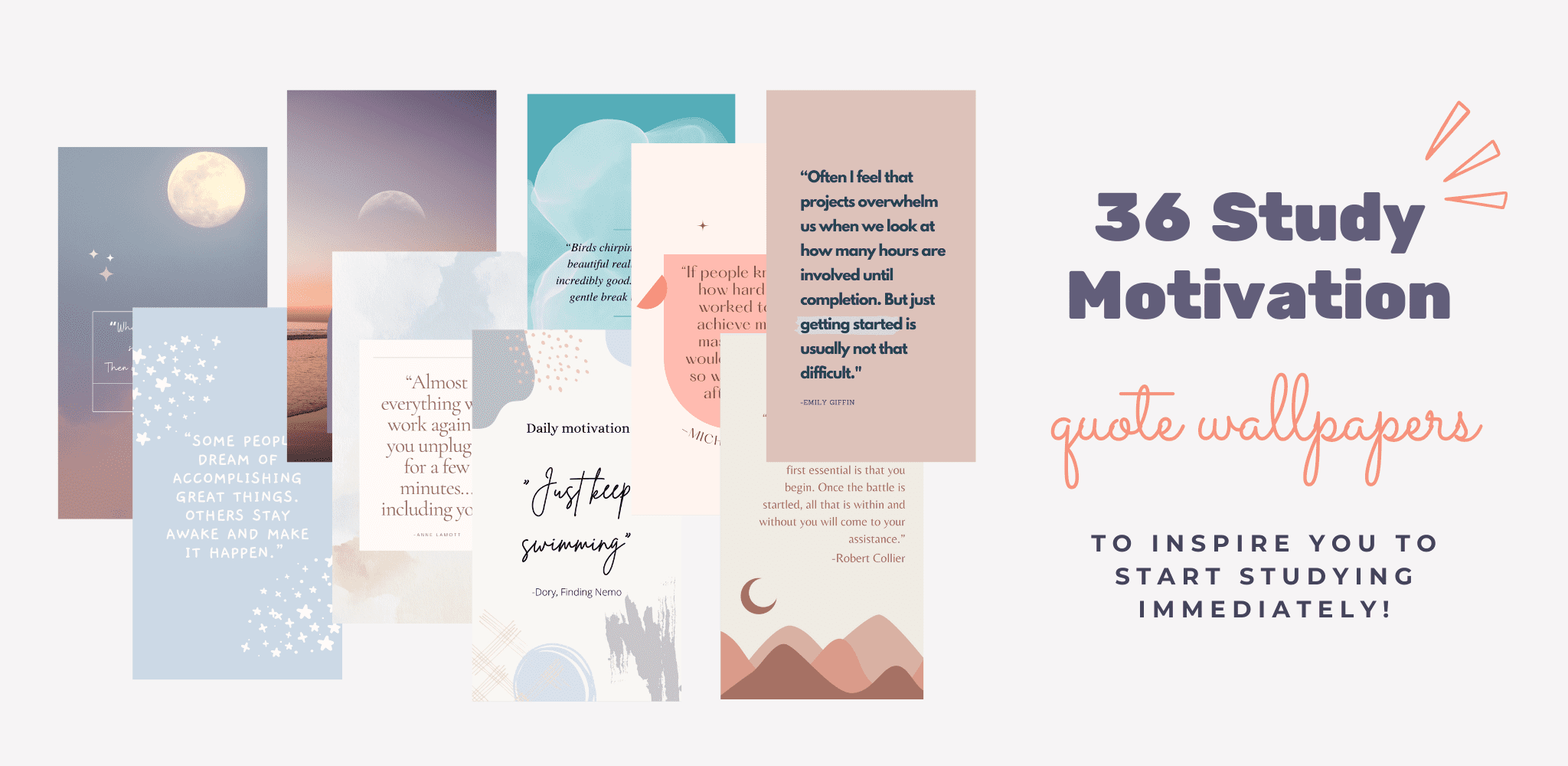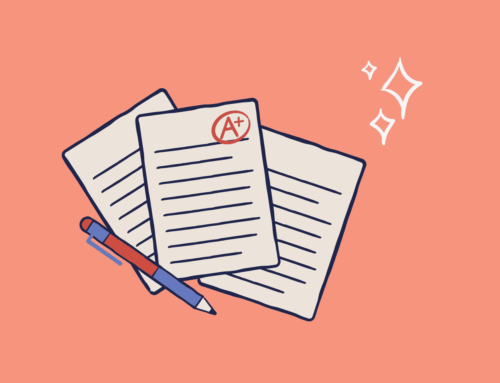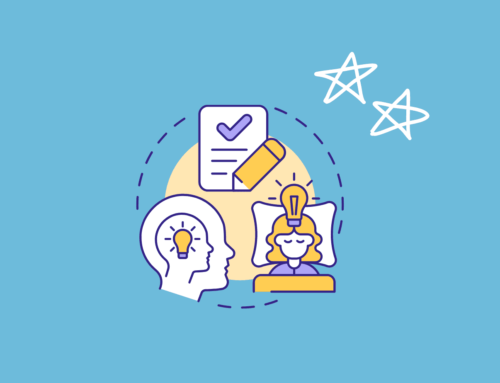

You want to become a more productive student, who doesn’t procrastinate studying, uses effective study techniques, and avoids study distractions. However, you may be plagued by doubts, such as “I’m not a very disciplined person” or “I always tell myself I won’t get distracted but end up giving in to the temptation.”
The good news is that according to Atomic Habits by James Clear, anyone can achieve remarkable self-improvement if they make small changes in their lives.
According to Clear, if you failed to stick to resolutions like avoiding procrastination or resisting study distractions in the past, it was because you didn’t change your system. In other words, you didn’t change the way you approached studying but expected different results.

In this post, I’ll be explaining how you can apply Atomic Habits to studying. Specifically, I’ll be providing actionable steps you can take immediately to build these habits and make them stick:
- Avoiding procrastination
- Using effective study techniques
- Resisting study distractions
Let’s jump in!
This post may contain affiliate links, which means that when you make a purchase through a link, I make a small commission at no extra cost to you.
Why Should You Apply Atomic Habits to Studying?
Before we get into the meat of the article, I want to quickly explain how applying Atomic Habits to studying can change your life.
In the book, Clear emphasizes the power of small changes (or atomic habits). He says that if you improve by 1% each day, those daily improvements compound into 37x improvement by the end of the year.
Conversely, if you get 1% worse each day, those daily regressions will bring you down to nearly zero by the end of the year.
Therefore, building better study habits can truly transform your performance as a student. Plus, the great news is that you don’t have to make massive changes. Instead, you can improve in small, incremental steps (just 1% each day).

In this post, I’ll be explaining the small steps you can begin implementing today. By following these steps, you’ll make daily progress that compounds into remarkable results.
Just a few months down the road, you could:
- Have better grades.
- Have more time for activities outside of studying. If there’s a personal project you’ve been thinking about or other activities you’d like to get involved in, overcoming study procrastination can create time for those things.
- Become a more focused, disciplined person overall.
Okay, no more delays””let’s get right in.
Habit #1: Stop Procrastinating Studying
Do you ever tell yourself that you’ll start studying, but keep delaying it? As students, I think we’ve all been in the same situation.
We want to start studying as soon as possible, but somehow get pulled away from our intention in different ways. “Just one more video!” or “My friends are hanging out in the courtyard!”
To overcome study procrastination, you need to make studying an integral part of your routine””something just as necessary as eating or sleeping. Something you can’t skip.
Something that you may even begin to look forward to doing.
Here are steps you can take to accomplish this:
Part 1: Make It Obvious
Create An Implementation Intention
Write the following down in your planner: I will study at [time] in [location].
By making time specifically for studying, it becomes more difficult to skip it. For example, you could say: I will study at 4 pm after my afternoon lecture at the desk in my dorm.
The goal is that eventually, you will have the urge to study when the time rolls around. Studying will have become an integral part of your routine.
Habit Stack
Instead of using an implementation intention, you can also schedule studying after a habit you already do. If you choose this method, write down: I will study after I do [existing habit].
For example, you could say: I will study after I eat lunch.
As a result, eating lunch will become the cue for you to begin your study session.
Design Your Environment
As Clear emphasizes in Atomic Habits, self-discipline is not about willpower””it’s about designing your environment to make good behaviors as easy to perform as possible and bad ones impossible.
To stay focused while studying, you must designate one specific place for studying. You should do nothing but study in this place. That’s because we naturally gravitate towards the behaviors that are easiest to perform in a given context.
If you study in bed, you’ll likely doze off. If you scroll on social media while sitting at your desk, you’ll be constantly tempted to open social media while studying.

To avoid these distractions, you need to do nothing but study in your designated study space.
Also, you can put up motivational quotes in your study space. For example, you could use the 1% quote from Atomic Habits:
“If you get one percent better each day for one year, you’ll end up thirty-seven times better by the time you’re done.”
Or, check out these 36 motivational study quotes (with a link to download them as wallpapers).
You should also add uplifting personal elements in your study space. This could be pictures of fond memories, small mementos that you treasure, an aesthetic mood board, or anything else that makes you want to spend time in your study space.
Part 2: Make It Attractive
Use Temptation Bundling
To make studying something you want to do, you need to combine it with things you already enjoy.
One way to do this is by investing in stationery that you like. Personally, I find that if I buy aesthetic stationery, I’m more motivated to study simply because I look forward to using the stationery.
Here are some of my favorite supplies:
Join a Positive Community
Another way to make studying attractive is by spending time around students with a positive attitude about studying.
If you spend time around students constantly complaining about school, then their negative energy will rub off on you.
If instead, you spend time with students who are driven and motivated, their positive energy will influence you.

Change Your Mindset
Adopting a positive mindset about studying is essential to making it attractive. Instead of thinking, “I need to study,” think, “I get to study. The time I spend studying is expanding my knowledge and skill set.”
Again, for extra motivation, check out these study motivation quotes you can use as your wallpaper.
Create a Motivation Ritual
Finally, creating a motivation ritual is a good way to make studying something you look forward to. This is an enjoyable activity that only takes a few minutes and which precedes the actual habit.
Here are some motivation rituals you can implement before studying:
- Listen to one upbeat song
- Meditate or do breathing exercises for a few minutes to achieve a state of focus
Part 3: Make It Easy
Focus on Frequency
The amount of time it takes for a behavior to become a habit does not depend on the number of days. It depends on the frequency you perform the behavior.
Therefore, it’s not about the number of days you study. It’s about the number of times. If you implement the aforementioned strategies 2-3 times a day, studying without delay will become a habit faster than if you only implement them once per day.
Reduce Friction
Make getting started on studying as easy as possible. Here are a few ways to achieve this:
- Make your study space easy to get to. Preferably, it should be your desk.
- Keep your study space organized. The cleaner your study space is, the more willing you’ll be to work there. Also, you should ensure you have all the supplies you need. That way, you won’t need to get up and get anything, which can make it difficult to study efficiently.

- Have a well-organized note-taking system. Keep all your notes in one place so that it’s easy to access them. If you have to search for your notes, you’re creating extra obstacles to studying.
Use the 2-Minute Rule
If you’re having a hard time getting started, tell yourself just to get started for two minutes. Set a timer for two minutes and force yourself to start studying.
You’ll likely find that after the two minutes are up, you’ll be ready to continue studying.
You can also start with an easier topic before moving on to harder ones.
Part 4: Make It Satisfying
Create An Immediate Reward
Before you start studying, break down what you need to study into very specific sections. For example, if you’re studying cellular respiration, break it down into the following sections:
- Glycolysis
- Krebs cycle
- Electron transport chain and oxidative phosphorylation
- Aerobic vs. anaerobic cellular respiration
Then, as you finish studying each section, check it off. This provides a sense of accomplishment that is immediately satisfying.

After you finish your study session, reward yourself by doing something you enjoy.
This could be:
- Watching some YouTube or a show
- Going on a walk
- Calling a friend
Habit Track
Using a habit tracker can be very motivational because it provides visual evidence of your progress. You could track a habit like “study >2 hours a day”.
Each day you complete the habit, check it off right after you complete it. This causes your brain to associate finishing a study session with immediate satisfaction.
Over time, you’ll want to keep the chain of checked boxes going. Even on the days you don’t feel motivated, you’ll be inspired to study simply by the urge to check off the habit.
I currently do all my habit tracking and planning/organization in Notion. Learn more about this all-in-one workspace and student planner app here.
Habit #2: Use Effective Study Techniques
Unfortunately, time spent studying is not directly correlated with the quality of studying. If you spend a lot of time studying but don’t use good study methods, you waste a lot of precious time.
Many common study methods, like highlighting and rereading notes don’t help with retention at all. What does help with long-term retention is anything that involves active recall.
Active recall involves pulling information from your own memory. It’s not easy, but it’s necessary to remember and understand information better.
If you aren’t already using active recall but want to start using it, here are steps you can take:
Part #1: Make It Obvious
Create An Implementation Intention
Write the following down in your planner: I will do [active recall method] during my study session at [time] in [location] today.
In the beginning, you can experiment with different active recall methods to figure out which work best for you.
I explain several effective study methods in this post, several of which are active recall methods. Here’s how I incorporate active recall in my study sessions:
First, I review my notes using deep processing strategies. This involves relating my notes to real-life scenarios, concepts I’m already familiar with, and visual diagrams.
Next, I retrieve my learning. This is where the actual active recall takes place. I typically use the Feynman Technique, which involves explaining a topic as though you were explaining it to a child. It forces you to recall the information independently and uncovers any gaps in your understanding.

Design Your Environment
Create visual cues to remind yourself to do active recall.
Put up a sticky note with your preferred step-by-step method for doing active recall. Or, put up the summarized results of a scientific study that demonstrated the importance of active recall.
Part #2: Make It Attractive
Join a Positive Community
Find a friend to review flashcards with. Or, join a study group and ask each other questions to assess each other’s understanding.
Change Your Mindset
Active recall can feel difficult. That’s because it’s supposed to be difficult. When it gets particularly hard, remind yourself that you’ll be rewarded for the effort you put in now.
You’ll retain the information and understand it better in the long run.
Part #3: Make It Easy
Focus on Frequency
The more frequently you implement active recall in your study session, the more automatic using active recall will become.
If you strive to use some sort of active recall every time you study, active recall will quickly replace your old study habits.
Reduce Friction
Use a note-taking system that prompts active recall.
Currently, I take all my notes in Notion. One of my favorite things about Notion is its toggle feature. By hiding my notes in toggles, I force myself to recall the information before rereading my notes.

Another option is to create flashcards as you’re reviewing your notes for the first time. Doing active recall in your first review session will be very hard. Instead of doing active recall, you can create flashcards to use in future review sessions.
Part #4: Make It Satisfying
Create An Immediate Reward
Add active recall as specific tasks in your study checklist. For example, you could say, “review chapter 6 flashcards” or “review [concept] using the Feynman Technique”.
Right after you accomplish the task, check it off.
Habit #3: Avoid Study Distractions
Have you ever started studying, then continuously been tempted by some distraction until you gave in? While technology has provided many benefits to the world, it has also presented many distractions.
Fortunately, there are steps you can take to eliminate the temptation of study distractions in the long run:
Part #1: Make It Obvious
Create An Implementation Intention
Writing down your intention solidifies your resolve to follow through with something. If you’re committed to avoiding study distractions, write down: When I study at [time] in [location], I will not be distracted by [usual distractions].
Put this note somewhere visible””in your planner, on a sticky note, or anywhere else you won’t miss it.
Design Your Environment
As I mentioned before, you should have a study space designated for nothing but studying. If you need to take a break to do anything else, you should move to another area.
That way, your brain automatically associates the space with working.
Part #2: Make It Attractive
Join a Positive Community
Spending time around studious students can inspire you to be less distracted. They will influence you to be more studious, and if you are known as someone who is studious, it will motivate you to continue being studious.
It’s a positive feedback loop: your environment influences your identity, and your identity influences how you want to be perceived in your environment.
Change Your Mindset
Every time you resist a study distraction, don’t view it as a terrible struggle. Instead, view it as one step closer to becoming a more, focused productive person.
Remind yourself that if you reduce the amount of time you get distracted by an hour each day, that equates to two full weeks a year. Imagine the number of things you could learn and accomplish in that time.
Create a Motivation Ritual
Every time you feel like getting distracted, take two quick minutes to do a guided meditation or breathing exercises. This can help you get refocused.

Part #3: Make It Easy
Focus on Frequency
The more times you avoid getting distracted, the more natural it will become. Eventually, the temptation to give in will diminish.
Reduce Friction
Put anything that may distract you far away. If you have to use a device to study, install app and website blockers.
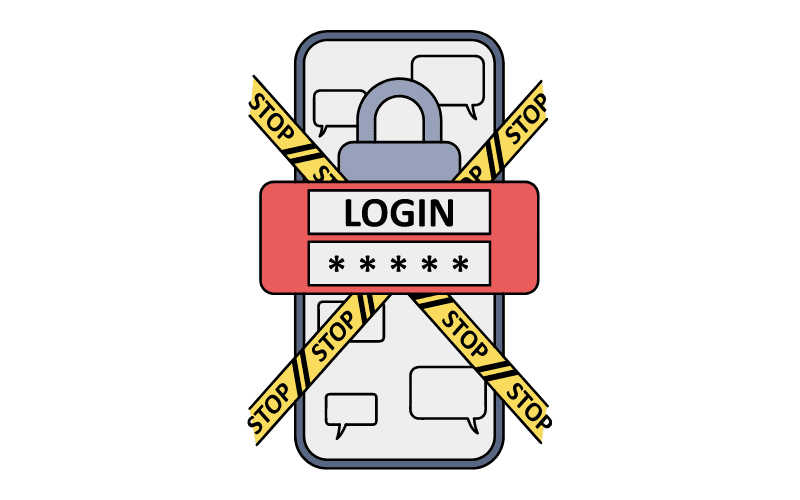
Also, if you use Chrome to study, use a separate Chrome window from your personal one. Especially if you’re logged in to websites like social media on your personal browsing window, this can be helpful.
If you work on a desktop, you may want to create a separate account for work uses. Don’t log in to any of the entertainment websites you typically log in to on your personal account. Reserve this account for school and work only.
You may also like “11 Ways to Stop Getting Distracted by YouTube While Studying”
Part #4: Make It Satisfying
Create An Immediate Reward
Every time you complete a study session in which you don’t get distracted, put an X in your planner or somewhere else visible. See how many X’s you can collect per day.
Habit Track
You can also add a habit like “no study distractions” or “one step closer to becoming a more focused student”. The second one may be more useful because it reaffirms your progress toward an identity you want to personify.
Overview of How to Apply Atomic Habits to Studying
By making small changes in your study habits, you can make a drastic difference in the long run. You can become a more productive and focused student, as well as make time for other meaningful activities.
I hope the applications of the four laws:
- Make it obvious
- Make it attractive
- Make it easy
- Make it satisfying
to the habits of avoiding procrastination, using effective study techniques, and resisting study distractions have inspired you to develop better study habits!
Although this article was solely focused on how to apply Atomic Habits to studying, the book can be applied to all aspects of your life to facilitate remarkable self-improvement.
In addition to building habits, this book provided me with a lot of insight into:
- The psychological motivations for our behaviors
- Why certain strategies work and others don’t
- How to choose habits that constantly advance your development
If you’re interested in using these concepts to improve your life, I highly recommend getting a copy of the book.
Lastly, which of the strategies mentioned in this article will you be implementing? Let me know in the comments below!
For more on personal growth and studying, check out:
- How to Wake Up at 5am to Study””Tips From a Former Night Owl
- Morning to Night Routine for Students to Boost Productivity
- How to Build Habits That Stick
- All-in-One Aesthetic Planner App for Students
- 36 Quotes to Motivate You to Study Immediately + Wallpapers
- 7 Secret Tips For Studying That Will Transform How You Study
- 9 Guaranteed Ways to Overcome Procrastination for Students

Learning With Angie is a place to share honest, unfiltered advice to promote student success. So if you’re a student (high school, college, or beyond) looking for tips on productivity, studying, personal growth, and more to reach your potential, this is the place! To read more about Learning with Angie, click here.

